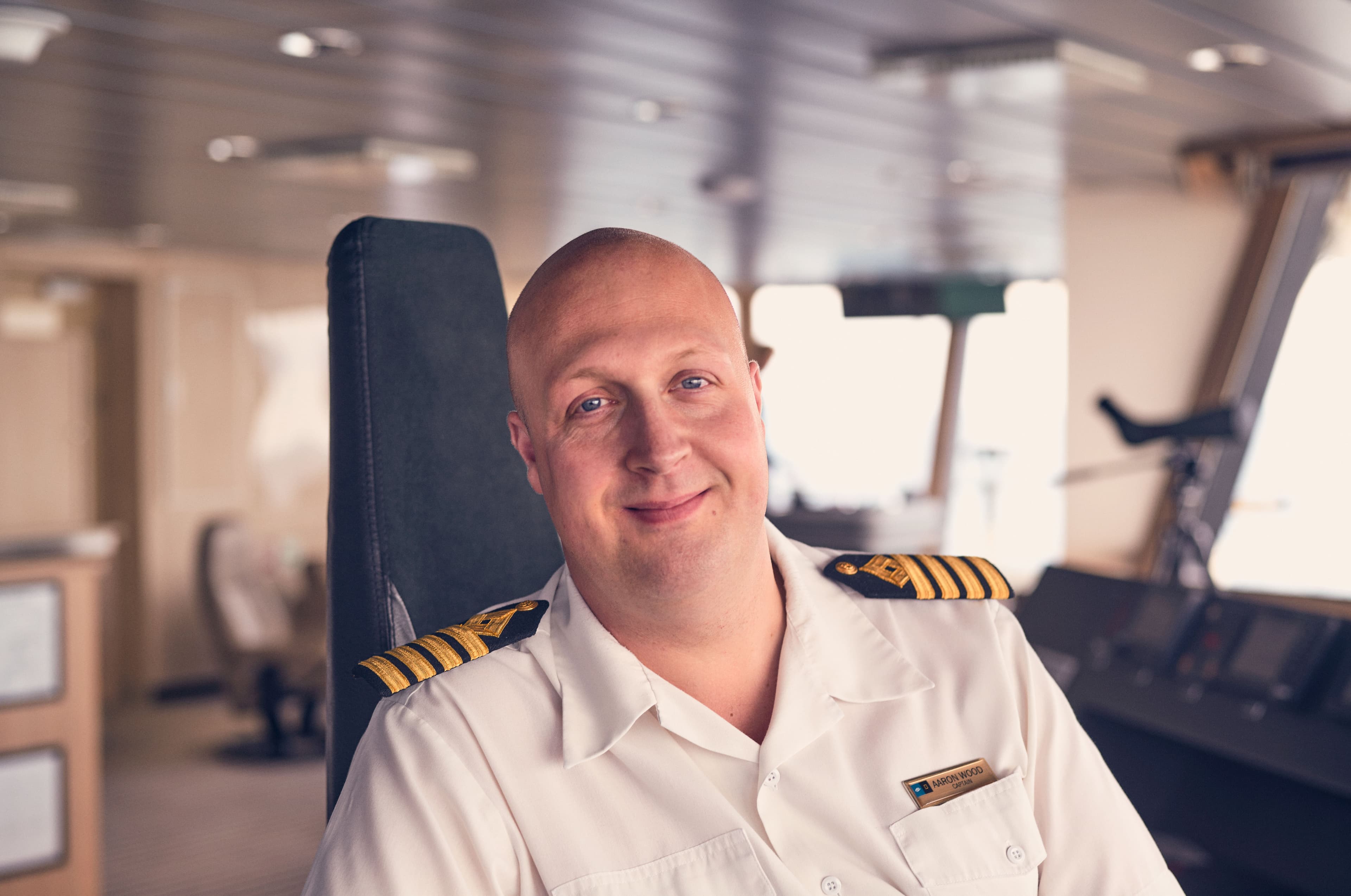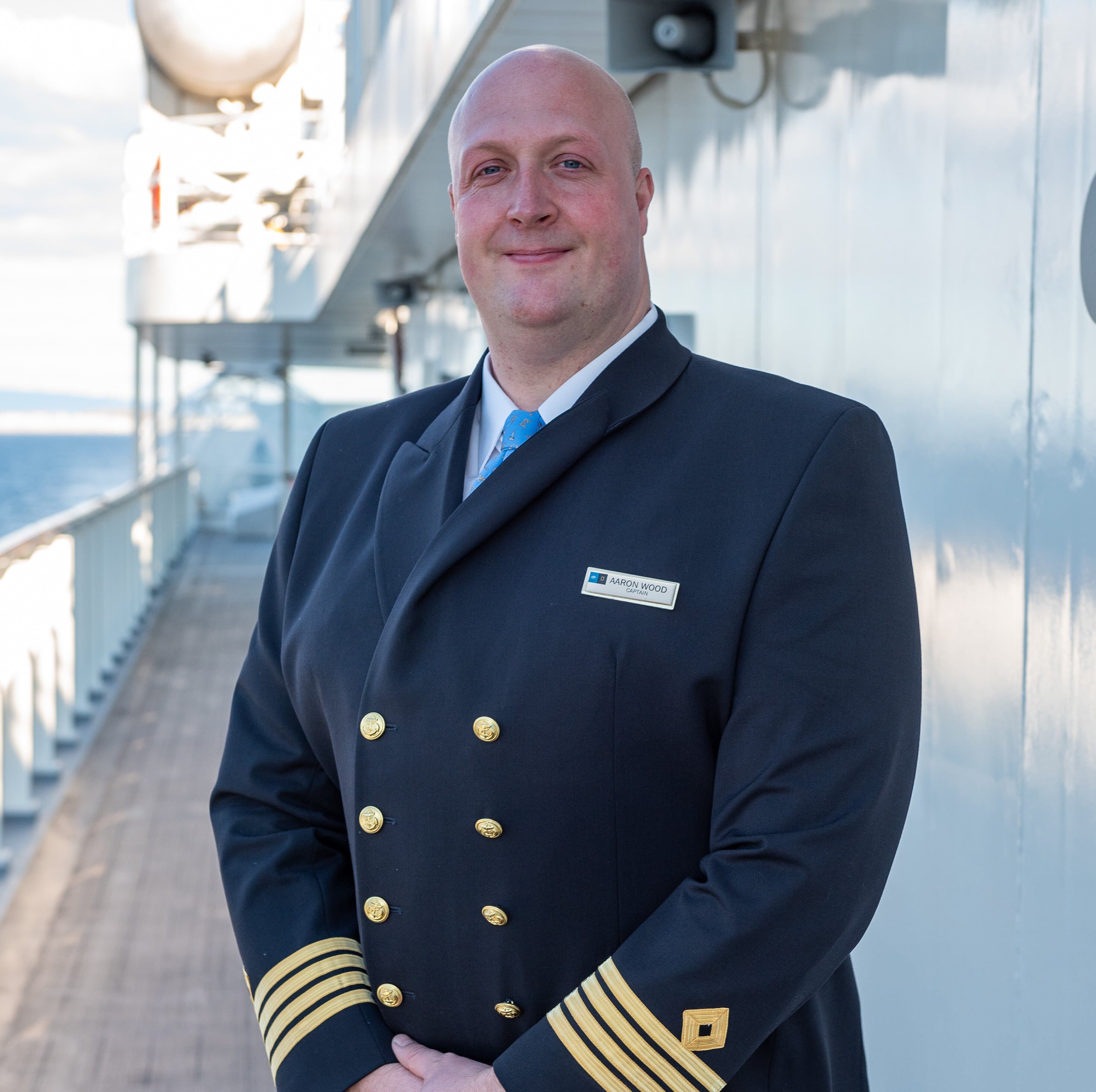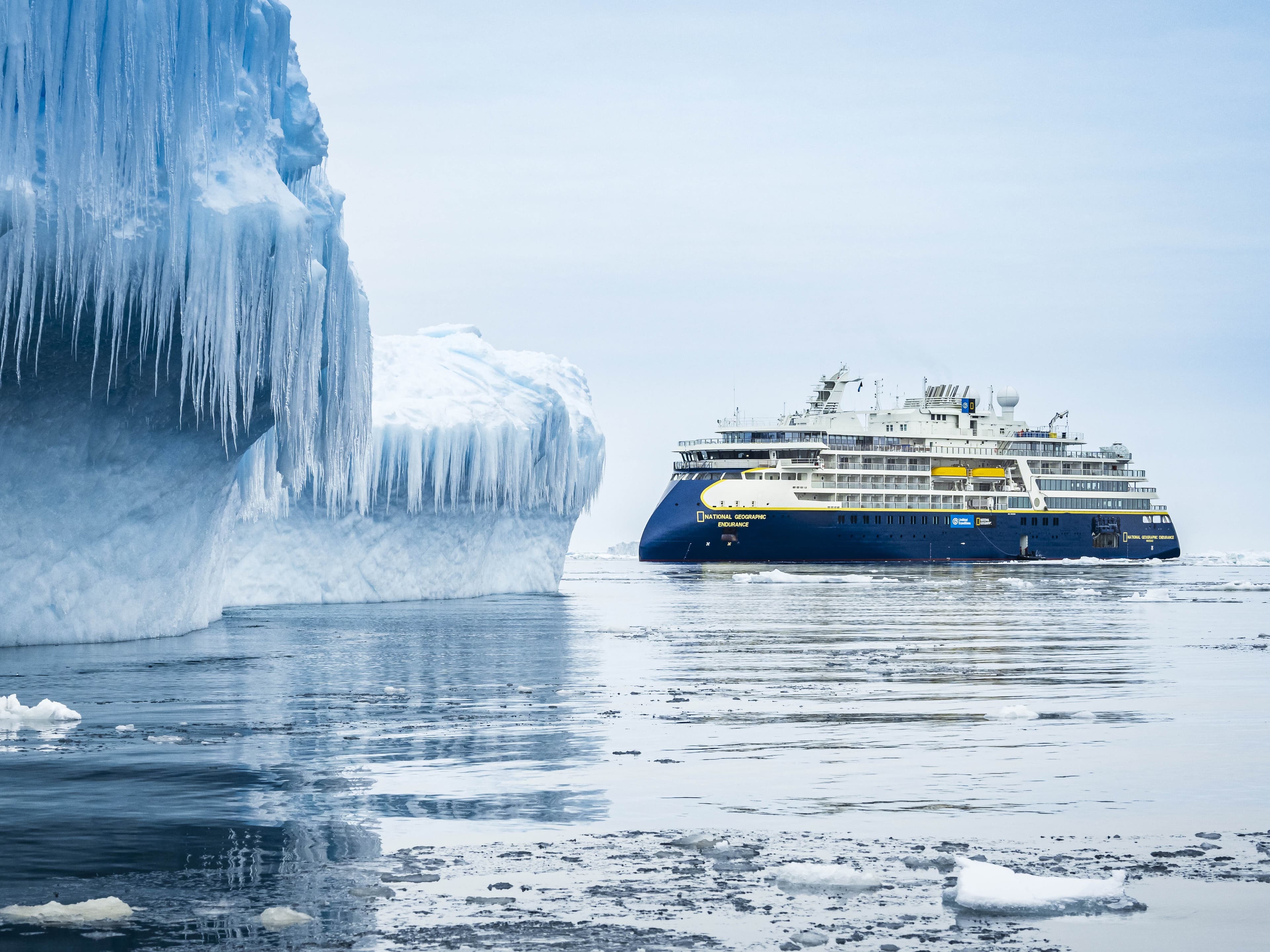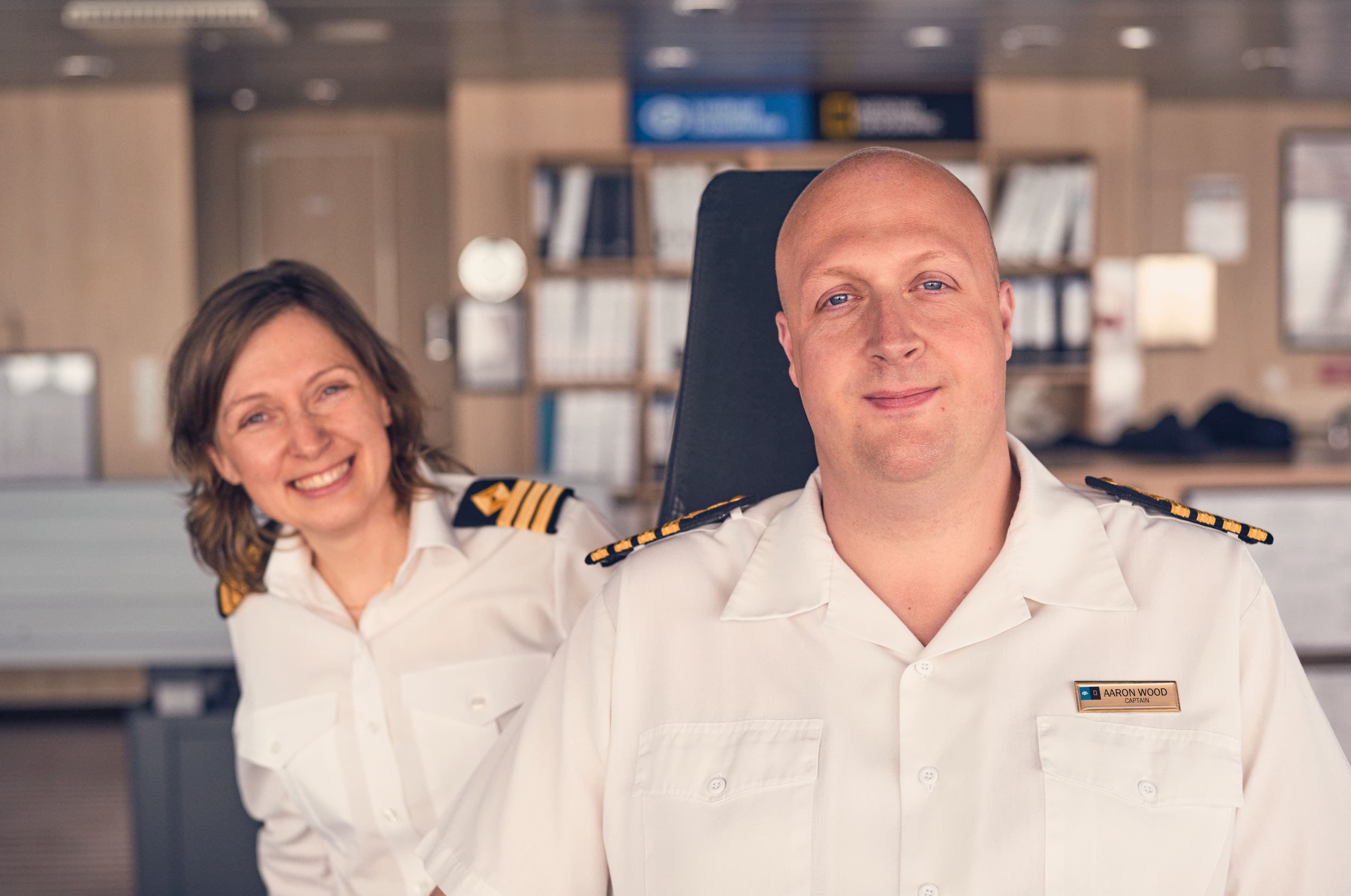In Good Company: A Life at Sea with Captain Aaron Wood

“Once the ocean becomes part of you, the saltwater flows in your veins,” says Captain Aaron Wood, a lifelong seafarer who has been with Lindblad Expeditions-National Geographic since 2014.
Wood first fell in love with polar navigation while working on cargo ships in the Arctic Ocean, so when the opportunity arose to join the crew aboard National Geographic Endurance, a vessel specifically built for Arctic and Antarctica expeditions, he jumped at the chance.
After numerous voyages to Antarctica, Patagonia, the Falklands, Greenland, and Iceland, Captain Wood’s enthusiasm for polar navigation has not waned. He recently shared with us the joys and challenges of his job, why he remains captivated by these regions, and most of all, by exploration.

Captain Wood first gained his sea legs at 16 working on cargo ships in the Atlantic Ocean. Photo: Alexandra Daley-Clark
When did you first realize your love for the sea?
I was born in the north of England, up on the Northumberland coast, so the sea has always been a big part of my life. Growing up, I was amazed by what adventures it could bring. When I was 16 I was lucky enough to go off to work at sea and I’ve been there ever since. It’s where I call home.
When did you first visit Antarctica and what was your first impression?
My first trip to Antarctica was in 2014 on the National Geographic Explorer. Prior to that, I knew that it was only a little over 100 years since the Shackleton expedition, and I’d read about the extraordinary stories of these famous explorers and the harsh environments they endured.
What blew me away, though, was Antarctica’s beauty. It is unlike anywhere else in the world–the wildlife, the nature, the smells, the sights, the big tabular icebergs. When you first leave the ship and walk in the footsteps of legendary explorers, you see it as they would have 100 years ago. It is very much unchanged.

The National Geographic Endurance anchored in the iceberg-laden waters of Antarctica. Photo: Ralph Lee Hopkins
How is National Geographic Endurance equipped to operate in the harsh elements of the polar regions?
National Geographic Endurance is a category A ice vessel, and operates year round in the polar regions. She is a fully stabilized and extremely capable ship with a strong hull, strong frame inside the hull and additional equipment such as ice radar which allows us to safely operate in the ice.
We also take Zodiacs out ahead of the ship to produce charts and images of the underwater topography. This allows us to see where we can navigate the vessel. We don’t break ice–that is not allowed–but we do push through broken ice packs. The ship’s immense power and azipods provide a new dimension of maneuverability, allowing us to utilize the vessel to its fullest potential.
How does the weather and ice impact navigating in these parts of the world?
Navigation can be challenging due to bad weather, strong currents, and ice. In the planning stage, we monitor weather forecasts 3-4 days ahead, any earlier is unreliable. The expedition leaders and I will review satellite images, weather charts, and ice charts to formulate a plan of where to take the ship, and where we can access landing sites to give our guests the best opportunity to safely explore. As we travel, we continually adjust our schedule and itinerary to place us in the most spectacular locations possible.

Jana Berkova, 1st Officer of Navigation, (seen here with Captain Wood) is one of the many crew members that helps the National Geographic Endurance run smoothly. Photo: Oivind Haug
What is the makeup of the staff onboard an expedition trip?
We have about 105 crew members, ranging from the hotel and technical to the deck and expedition departments. The teams work together around the clock to deliver the best possible experience. The result is the vessel has all the services and amenities of a modern town or city.
The Bridge team consists of the captain–that’s me, then we have the staff captain–he’s in charge of the deck department and keeping watch on the Bridge. The first officer is responsible for safety onboard, and ensuring the crew are trained to handle any situation. The first officer of navigation plans our routes and ensures we are safely getting from one destination to another. The ice officer is also important. He has many years experience operating in polar regions, and he keeps watch from midnight until six a.m. This allows me to step away from the Bridge for a few hours and rest for the next day.
Who is the ideal expedition traveler?
I recommend expedition travel for anyone who hasn't experienced it yet. It is as close as you can get to being a modern explorer. It allows you to access places you wouldn't be able to on larger vessels, and it’s a more intimate way to get to know a destination. There is so much world out there for us all to discover, and everyday I see how travel–and experiencing these wonderful parts of the world–impacts people’s lives. The era of exploration is still alive!


